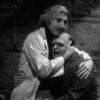Search the Community
Showing results for 'Dream'.
Found 7,590 results
-
Hello Melanie, Welcome !I have be OBEing since young age.And remeber asking my mum that i am scared when my body goes stiff when i close my eyes and im thinking ,but cant move it,she didnt know unfortunatley.It was so scary back than.Those pshycic realms tally with realms of our mind(IMO). Nowadays i love the feeling of loosing body councessnes. OBE has never been focus for myself just something that happens .It feels better for me to try and shift to meditation while sleeping if i can.Thats what im working on now. Do you keep dream journal?It is helpful to work my dream world out and break into patterns and meanings ,than you can remind yourself of those inside the dream and break into different spheres ..or shift councissness. I think best protection is developing honesty,kindness and good intention as in character wise.
-
I am in this mood right now..a somewhat reflective mood. Regardless if I may have certain advanced cultivation level, my life was and has been largely sad..as I am looking back. Of course, is all matter of perspective but I can't dismiss it just because...some others may have worse life experiences. From my own perspective, I guess I am still trying to find some answers. The karma was originated from my grand mother on my father side. She was born during the Mao era in China, Guang Dong Taishan. She had a large family, 2 sons and 2 daughters. Her eldest son, my father, somehow, made his way to Hong Kong as a migrant when young. To do what you say? To get her entire family to live in Hong Kong during the 60s and 70s. You see where this was going, right? Economic migrants seeking a better life in places supposedly more wealthier, often sacrificing their children's mental well being for the sake of some fake, delusional dreams and expectations. Once they settled in Hong Kong, somehow, they managed to marry off her elder's daughter, my aunt, to an American born Chinese. Sigh..... Called it an arranged marriage or whatever. By the time I was born, my entire extended family on my father side had left Hong Kong for good and went to America. Somehow, my parents decided to make a life for themselves in Hong Kong. Why not? My mother was born in Hong Kong and a Hong Kong citizen. Unfortunately, growing up in Hong Kong, I have been told one day I would leave for America. This was not good knowing that Hong Kong isn't really your home even when you were born in the city to Hong Kong parents...is messed up. My childhood was a nightmare plaque with sadness and existential crisis. I have never met my grand parents on my father side, and the aunts and an uncle, until I was like 11 or 12...when I left for America..with plenty of unresolved childhood issues. My own existential crisis, originated from the time growing up in Hong Kong, didn't get healed until I was 17. Healing...meaning that I stopped dreaming about my horrible childhood experiences and beginning to dream about healing and overcoming in my childhood. 2 years later, I have also overcome America (I became a magnet to the country's karma too) and to have my first Kundalini energy rising experience lasting for over 15 days. I was finally recovering from all the karma being passed onto to me.......LOL LOL....... I was never the same from that point. That was some 20 years ago. Secretly, I do wish I have been growing up in Hong Kong since I was always very close to my extended family on my mother's side. Unfortunately, somehow, I was determined to let go everything I had with Hong Kong before coming to America. I haven't really spoken to my extended family in Hong Kong for decades. I think is sad but...what can one do anyway. What happened to my American grand parents and aunts? My older aunt became a housewife in America and didn't even have a decent education. In old age, she is suffering from some advanced stage of diabetes and can't walk easily. She has asthma as well. She got 2 daughters but I was never close to them and we haven't talked to one another for decades. My younger aunt got herself pregnant dating the wrong guy when young. She ended up marrying another guy and he was from Burma. They were eventually divorced and they had a son. Again, I have not talked to them for decades. She is currently living and working in China. LOL.... Get this......her mother, or my grand mother, spent her whole life trying to get away from China and to come to America but to only have one of her daughters ending up living and working in China...some 40 years later. Hehehehe........... Karma at times can be funny too... What about my "baby" scrooge uncle? He was the more Americanized one. Sadly, he never shared his wealth to his parents. He is one of those Chinese Americans I am supposed to look up too...the model minority they say. LOL LOL... Except that he is not so Chinese at all and but can't pass as an American either. He is married and has 3 kids. He didn't marry Chinese of course. Their marriage is also rocky. The person who originated the chain of Karma, my grand mother, passed away few years ago. Can't say I cry at all. In fact, during the funeral, no one really cried for her. I have a sister too but we were never close even when young. We don't even talk at all unless it is necessary. No, she isn't really that Chinese at all. She has her own issues and her marriage is also over but they haven't divorced yet..... I am glad that my parents are healthy and even my mother's congestive heart failure has been cured. For me...still hoping there would be better days to come... I often see myself as a Dharma warrior and ending all karma in my life at least. I think I have been successful.
-
No.............. 1920's China was hell. We can look back now and to dismiss all the wrong doing done in the name of self preservation... 1920 Chinese mob bosses in Shanghai and Hong Kong??? I don't romanticize history. That was a period of decadent culture without law and order and even morality...pretty much in most nations going through changes..ie Germany. Is one thing you made a decision causing a chain of karma and somehow...the means can justify the end. What happens when it is not??? It would only cause more suffering..... It would only deepen your illusion and karma..... If your mind cultivation has reached to certain refinement and level, your dream vision would show you this chain of karma very clearly even before you make the first decision that would effectively change your life or the other person's life.
-
For some reason your post made me think of this one: By Dao Zhen I think for serious students, this is a big hurdle to overcome. It is best to not get into the habit of gaining depression when an emission happens in sleep. It is natural, and go slow and do not force anything, nor become obsessed with "saving" jing. Keep practice, follow solid methods and guidelines. With time, all will become secure quite naturally. I have found the following to be a help for me in my practice. Yet this is by no means advise from an expert, as I have very little experience. In the tradition I am learning, it is generally accepted that a serious student is celibate. 1. Change conditioned habits and patterns in regards to viewing and interacting with women - on the street, and in the manner we speak and deal with them in public situations - If we flirt, and have playful interaction with women, it may stir things up quite a bit, and cause trouble during sleep. Honor and respect women as your sisters in Tao, yet do not view them as sexual objects, nor project sexual fantasy on women. 1-a. Do not view pornography video, magazine, or sexual movies. 2. Diet. Do not over eat, and do not go to bed while full. I have found it best to eat the last meal of the day around 5pm or so. Also in the tradition I am learning, it is thought best to follow a simple vegetarian diet, with no spice, garlic, onion, scallion, chives, and cilantro. 3. Do not have very heavy blankets on the body that will create too much heat when sleeping. 4. Do not sleep on the stomach. Sleep on the back with one leg crossed over the other – hands resting below the navel, or on the right side with one leg tucked behind the bottom leg at the knee level – right palm cupping the ear – left palm below navel area. 5. The most important point I have found that helps is to sit for 1 - 2.5 hours or so in proper seated meditation practice before sleep. This is perhaps the most important point, and will yield the most results. In this tradition, we have a method to transfer Jing to Qi that is taught. It is termed - "Lighting a Fire", or "Burning a Soft Fire". It is very effective, and yields the effect of the Jing being transformed to Qi, and really is like something burns away and evaporates. There is great warmth generated in the Lower Dantian area that moves, and steams upward during the process in a manner that is very pleasurable and uplifting. One is left with a feeling of great expansion, and the sign that the Jing has been completely transformed, and it is safe to sleep is one has a feeling like a vast, expansive, clear blue sky. The sign that one has made some gain in transformation of Jing over a period of time, is generally one will stop to have dream activity. There is a great stillness in the sleep state, and no real strong dream activity. This is also related to the pattern of the Metal conquering Wood; Or the Po suppressing the Hun during the night. When the Hun is suppressed by the Po, it wanders away from the sphere of the liver, and the resulting experience is dreams. As Jing is transformed into Qi, and the Hun is strengthened, there is less and less dream activity during the sleep state. One sign I have also come to notice is that if I was lazy and just lie down for sleep without practice, there will be a feeling of something stirring in the lower Dantian, like a movement, or maybe even a worm or something is really moving and stirring. This is a sign that one will experience an emission during sleep, and it is important to have a strong will power, and sit up and cross the legs and sit to Burn the Soft Fire. It is also a good idea to get into the habit of getting up from sleep at any time in the night when you awake and there is a stirring in the sexual organ, or a strong erection. Just sit up, cross the legs, and lightly gaze over the Lower Dantian area and sit in stillness. In this system, they also teach a standing method of body movement, contraction and breathe retention in the first stages to strengthen the lower gate, to help prevent the emission during sleep. This stage does not last forever. It is as if the body and being is at first in a habit to let the liquid flow out, and loose the essence. Yet with slow and steady practice, the body and being learns another way. It becomes the natural state to preserve the essence, and no loss is experienced. It is an investment of time. So it takes a strong and steady will power. Constant and steady daily practice over a period of time. Persevere. Dao Zhen
-
Fractals represent broken timewave software.. ala Mckenna.. Timewaves exist because seperation from one thing to another must take place.. a differentiating mechanism so to speak! Wave forms in fractals expand as real numbered decimal values wave in and out of the absolute.. Zero point suit philosophy.. So what is the data of the fractal but a reflection of a reflection which is why you can keep zooming in and come out with more and more indepth fractals.. But what type of data do they relate to? Well most likely time wave data. The idea of differentiation.. which is mapped as a simple growth extension.. really reflects the difference perfectly.. and it merges and reemerges from 0 point space.. the fractal being mapped via 0. Decimals.. real numbers and hence a technicolor dream.. of the refractory method of time..
-
You daobums are confusing me today. You hope to buy a little raven soon? I vaguely recall trying to use a little raven instead of a jian once... maybe in a dream, maybe in confusion, not sure... One thing I'm certain about is, NEVERMORE!
-

Sigil Watching
Boundlesscostfairy replied to Cookie Monster's topic in Esoteric and Occult Discussion
This reminds me of the flow of time as by unkotting a ribbon over and over Like occams razor or a blief little image of gas or the input and output of the yin and yang.. Like a ribbon falling meriliy in and out of eternity A painbrush or calligraphy of some fine art of the desert or sands of time.. A makeshift healing method or dream catcher..! A reasonable inuendo of the sun and solar burn of photons that raise the eyes to ashes! A blinding scarf of effigy and beauty.. a simple design of the prime of time.. -
Like everything in life, there's many different ways to look at a thing besides the one that comes first, or most easily to our own mind. Like yourself and everyone else, I too was an inseparable part of the generation I was immersed in throughout my formative years. Our minds absorb the qualities of the times we live in in exactly the same way as our body does the water, food and air from which our body is built. In my case, as it was in yours, that meant a lot of years of what we used to call 'mind-expanding' drugs. However, unlike yourself, I don't look back on any of this with regret. I'd like to offer you an alternative way to look at this memory that seems to be presently giving you so much unhappiness. But since I'm nobody, I can't believe anything I might splather on about in this forum would be of much help. However, you might be interested in checking this guy out. Wayne Liquorman is a Californian chap who has been my favourite writer for a number of years now, He claims to have had the experience of 'Awakening 'happen through him about twenty years ago,... yet, his drug and alcohol consumption before that event absolutely eclipsed anything you or I could ever have done ! His claim is that all of our apparent history, (which we place so much value on when we're looking at whatever dream it is that we want to achieve next),... has no bearing whatsoever on whether or not we realise that dream. Here, I'll let you read it in his own words. Maybe it will take your mind off your past misdemeanours : * * {Q} : When you look at all the millions of searchers, and how few are self-realised,… {Wayne} : Yes {Q} : So how did you earn that ? {Wayne} : Let’s see,… I was a very nice guy. (laughs) I worked very hard. I was very earnest. I was kind and loving to all. You’re not buying this are you ? (laughter) It’s Grace ! {Q} : It’s Grace ? {Wayne} : It’s pure Grace,….and the definition of that word which I like best is, “Unmerited favour from God.” I was a pig for much of my life. (laughs) “Give me more !” Period. Give me more. I want more. More is not enough. There’s not enough booze. There’s not enough drugs. There’s not enough sex. There’s not enough money. There’s not enough strokes of recognition. There’s not enough ! So I will do whatever I need to do to get more. And so I was not a nice person. I was not helping others. I was not being generous. I was not being kind. I was not being loving. I was out there for me. And that’s incredibly painful. That’s a very horrible way to live. Not one that you would choose if you had a choice. And it’s one that kills many people younger than me. But for me, for this body-mind mechanism, there was Grace. Go figure. So that’s how I did it. So, if you want to follow my ‘path’ you’d better start drinking. (laughter) You have a lot of catching up to do. You’ve got nineteen years of hard living still to go ! *
-
Keep in mind that the order split into Theravadin and Mahayana over whether or not an enlightened individual could have a wet dream, about 150 years after Gautama's death. I'm serious, that was the issue they couldn't agree on--it's not about wisdom versus concentration, that's just something invented after the fact to explain the schism (you can find it in A.K. Warder's "Indian Buddhism"). If a teaching is really consistent with the oldest historical record of what Gautama taught (the first four Nikayas in the Pali sermon volumes), then it's about the cessation of habitual or willful activity, whether it's Theravadin or Zen. Seated meditation is going to involve thought applied and sustained at times, but thought applied and sustained also ceases. Each aspect of Gautama's mindfulness was intimately associated with in-breathing or out-breathing--if you ask me that is what's unique about Gautama's teaching--and freeing the direction of mind in in-breathing or out-breathing was a part of Gautama's way of living (I can quote the chapter and verse, if you like). One of sixteen aspects of setting up mindfulness that comprised his way of living, so it goes around and it comes around. There are other senses involved for me when I sit (equalibrioception, proprioception, graviception), and I emphasize them and free the location of my awareness; not the object of my awareness, but the location of awareness itself. Being aware of the stretch helps me relax into my body; being aware that my happiness depends on a natural breath helps me let go of activity. I can usually sink into a stretch for awhile, and find a spontaneous breath in the midst of a stretch, but about 35 minutes and I'm cooked. I wouldn't sit for more than 50 minutes or an hour. The guy I know who sat 50 minutes in the lotus 14 times a day for five days every month is sitting in a chair now, and he grew up in Japan--I wouldn't press it that hard! Shunryu Suzuki told Blanche Hartman: "Don't ever think that you can sit zazen! That's a big mistake! Zazen sits zazen!"
-
"Most people imagine god as a cat with his paw in the fish tank." -- Terrence McKenna And why is that? Why, if it's all a dream, billions have been dreaming the same dream for the past fifteen thousand years? and nobody, before that?.. Looks more like the kind of dream induced by sending a signal from a central computer to the microchip imbedded in a cyborg's pineal gland. Do check yours, and if you find one, pull it out -- then you'll hear the music of the spheres and know the universe is real. "It's beautiful, you balmy bastards, this is not a dream." -- George Starbuck
-
Hola William! Bienvenido. It's not often that someone arrives here really interested in the daodejing, so, congratulations for that in my humble opinion you're aiming at the right target. The DDJ is the book I offer the most always telling people: this isn't something for you to read, this is something for you to have! So, if someday you want to read it you already have it. Let me tell you why this is so: when I bought the DDJ for the first time it made no sense to me, so I left it on a shelf for two years untill the day (two years later) I picked it up again and fell in love with it. Sometime later e remembered a dream that I've had, years before buying the book, with the clear simbology of the DDJ, So, I guess it was somehow "destined" for me Read the book if you can, if you can't, nevermind ( as Lao Tzu suggests ) just don't be anxious about it. All the best oak
-
my 2018 dream destination... its a deeply spiritual place, aside from the touristy aspects of it.
-

So how do you guys do stuff? Idiot's guide in plain english?
RongzomFan replied to BaguaKicksAss's topic in Buddhist Discussion
I do my practice in the lucid dream state. Unfortunately I can't get the Wake Initiated Lucid Dream going, which is the proper night practice. -
Lerner, that's beautiful- the hammocks and terrariums! Yes, do start. And remember to, that 'where there is a will, there is a way'. You could always reconfigure parts of your life to make this dream possible- be these increasing your skills as you mention, or moving your family to the island and continuing your steady job/profession while developing the connections and place for your hobbies. Be creative and resourceful- think outside of the box. You can be responsible while not being traditional. And you can be grounded while pursuing your dreams along together. Share this with your family, brain storm together, and support each other in making your best possible selves in life together.
-
Lerner- what are you waiting for then? Have integrity, be true to yourself and honor yourself by moving forth with this. Anything less compromises the integrity of your person, so by extension your path. If you have the courage to fulfill this, then you will move into the next phase of your life along its rightful path. Maybe it will be as beautiful as you dream or maybe not, but you can be assured being less than whole in each step of your life if you don't take the complete steps in each moment to manifest your personal truths. So do it now and fearlessly!
-
If anything, I think the changes would manifest in my dream. I am generally not that suspectable to mood changes. If I experience any unusual dream situations (encountering interesting beings and figures and etc), I will report back here.
- 21 replies
-
- experiment
- remote healing
-
(and 1 more)
Tagged with:
-
Funny these dream time posts are popping up as I just posted about an experience on the S-M forum last week I had 2 different dreams of doing gift of the tao but... its like something or someone doesnt want me to do it ? In the first one I was doing gift of the tao then had some negative entity type stuff going on but did some kind of energy work on it and transformed it , the next thing I can remember I was doing energy work on a woman , my hands on her heart and on her back in line with her heart , I then woke up to find I was having energetic spasm's lying in bed. The next dream I was doing the first few moves of gift of the tao 1 and a Chinese man appeared in what I can only describe as a black kung fu suit ... a very negative and violent energy to him and made me stop doing gift of the tao ? Whether these where just strange dreams I dont know?
-
Hi GIH, Okay. If you are attempting to prove something here I suggest that we stick with the facts, as best as we can understand them. In your dream, if you shoot yourself, yes, yu and all the people in your dream will believe that you are dead. However, when you wake up you find that you are not dead and that all the people in your dream did not exist in the first place so what these non-existant people think is of no value. Additionally, if you shoot yourself during you waking hours you (your body and all its parts including your brain, are dead. We know nothing, factually, of anything that happens to or with us after we die except that our body rots away. Every thought concerning anything else is only conjecture - nothing but guess-work. So without your brain you are unable to identify your Self. You have returned. Full circle. Game over. Peace & Love!
-

help explain a tiny part of the Shurangama Sutra
goldisheavy replied to beoman's topic in General Discussion
This is actually very easy to explain. I have no idea why xabir wrote a book about it. Assume the eye is what sees. If that's the case, since you are not your eye, how do you see? You're going to say the eye has to pass the signal somewhere, right? Like into your brain perhaps? Visual cortex perhaps? OK, but since you are not a visual cortex, how do you see? Beyond the visual cortex, the signal in the brain is no longer visual in nature, and yet visual cortex alone cannot explain you seeing. Eventually, but with great difficulty, you'll have to say that it's the whole brain that sees and you will have to identify yourself with the brain. Of course by the time you move the function of seeing from the eyes and into the brian, you will agree that eyes are not what sees anything. Then you'll have a task of proving that you are not the brain. To prove that you're not the brain is a little more complicated, but not impossible. For example, in the dream you may have a dream brain, so does this mean you have multiple brains? One brain for waking and one for dreaming? Which brain is you? Then you may respond that only one brain is real, the brain you use now to read this, and the dream brain is a figment of this brain's imagination. If that's the case, I will then reply, if you accept that a brain can be a figment of another brain's imagination, then is it possible that this brain right here and now is a figment of imagination of another brain somewhere else? And you'll have nothing intelligent to reply to this. So basically there is no good reason, other than a lazy assumption, to think that you are a brain. There are other ways to disprove that you're a brain besides the one I've listed above. For example, you can examine objects of consciousness and conclude that no object of consciousness is what it is from its own power. Rather, all objects appear as they do due to some external-to-the-object context. Since the brain itself is an object of consciousness, since we can see it in the formaldehyde jar, we can refer to it in speech, like we refer to any other object, that means the brain is what it is only due to the external-to-itself context. So that means there is informational context outside the brain that is responsible for making the brain seem what it is. That means cognition is not happening in the brain, because cognition is precisely this awareness of context. So this is another way to prove that you are not the brain. So now you can be absolutely certain that eyes are not what see. -
Without wanting to pry, what was the dream?
-
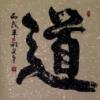
道教重要思想与教义(Taoist Important Thoughts and Canon)
dawei replied to ChiDragon's topic in Daoist Textual Studies
色 as 'color' used in the idom conveys the ancient meaning of the pleasure/desire (colors which arise in the body) of sexual contact or even non-contact from simple desire. It is also used of the homosexual relations and thus not really gender specific as to the partner. This has nothing to do with religious adaptation. (Be care who you ask about chinese meaning and history... you get anything from some). The phrase 恋色 (sexual desire) is also in A Dream of Red Mansions. If we want a serious consideration of its origin, then we need to go back to the Mawangdui manuscripts, and Confucian discussion on the poetry It is laid out rather black and white in what we know as the Classic of Poetry. (Hopefully this will dispel any misinformation about religious adaption). It was a common device to use people's desires and emotions as lessons. One can even find the pleasure of music compared to sexual desires. The common themes were about proprietary vs promiscuity; Do these stop where they should stop or are they in uncontrolled excess. These stories vary from people who are attracted from a distance and it is but a mere dream to those whose longing is never satisfied (even to mean physically never together--forlorn lovers who cannot meet). -
Liminal, the worst thing you can get from a map is a paper cut. And the self that writes the posts is the map... The territory -- well, imagine in your waking life you bang your elbow against the edge of a table that had somehow obnoxiously placed itself in your way. You didn't do anything to that table yet it hurt you. Well, what are you going to do about it? Nothing. You go, "Ouch!.. God damn it!.." and then forget all about it. That's the map. But then you have a dream and the dream-self actually dances right into the celestial palace of a certain god specializing, among other things, in damning tables, and points out the injustice that particular table had perpetrated. In the morning you wake up and the table's leg is broken. That kind of a territory...
-
* I'm a little apprehensive about contributing this next story to a religious/philosophic forum since it doesn't have the appearance of a 'spiritual story', nor even offer a salutary moral lesson that might possibly act as guidance in our daily lives. But from the first time I read it there was something so irresistibly compelling,... so exalting of the resolute, ‘fearless-yet-compassionate’ side of humanity, that this story was the jewel in the crown, above all others, that I simply had to add here. The story itself arrived by such curious means that it still mystifies me. One day while I was sitting at my desk near the front door, the postman arrived, the letter slot popped open, and a small package dropped onto the floor. After removing the parcel's wrapping, I found myself holding what appeared to be a single chapter torn from the body of a book of stories. There was neither a return address nor a covering letter. I've never since been able to discover who sent it, nor had I previously heard so much as a word concerning the subject matter of the story. Since then I've read and re-read this extract with undiminished pleasure quite a number of times over the years since it first arrived. However, few weeks ago a strong thought came out of the blue,… that I suddenly wanted to find out more about this story. The first step was obvious, (and I clearly should have explored it earlier). But the title of a book is usually written on the top of each left-hand page and, luckily, the torn segments I had followed that literary convention. So I put the title into Amazon's search engine and found that it had been taken from a book called "Seven Wonders of the Industrial World", by Deborah Cadbury. Once I had this information, I straight away ordered a copy of the complete book. And though I must say that the story posted below still remains my personal favourite from the collection,.... Ms Cadbury certainly is an extremely capable writer. If you enjoy her down-to-earth style in this story, I'm sure you would equally appreciate the rest of her most fascinating book. To cut my long-winded intro short, though on the simplest level this could be described as merely a tale of courage and altruistic motivation by a select handful of working British folk of the 1800s,.... I personally feel that its relevance is far more universal. Primarily, I find it an uplifting story about ‘all’‘ mankind. Human faults are so widely publicised in newspaper, TV programme, and in endless accounts of the environmental havoc we've unleashed on all other species by our existence on this planet. Thankfully, after I first read this historical testament, an inner part of me quietly rejoiced. A simple story,… of the 'good' in man. P.S. I've just discovered that it will have to be posted in two parts because there are too many characters. Fortunately there were logical break-points within the story exactly as Ms Cadbury wrote it. P.P.S. All my relatives arrive tomorrow so I imagine I’ll be away from this forum for a week or so, till Christmas is over and normalcy returns. I suddenly thought, a two-part serial of a 19th century tale,… it seemed a perfect Dickensian way to launch the Christmas season ! I hope the coming celebration brings all readers on this forum, every happiness of family, friends and shared enjoyment. * * THE BELL ROCK LIGHTHOUSE PART ONE : * The safe anchorage of the Firth of Forth on the east coast of Scotland has always been a refuge for shipping hoping to escape the wild storms of the North Sea. The safety of this natural inlet, however, is considerably compromised by the presence of a massive underwater reef, the Bell Rock, lying treacherously right in the middle of the approach to the Firth of Forth. It is far enough away from the coast for landmarks to be unable to define its position, being eleven miles south of Arbroath and a similar distance west from the mouth of the Tay. At the beginning of the nineteenth century, when a storm was brewing in the Forth and Tay area, those at sea faced a forbidding choice: ride out the storm in the open sea or try to find safety in the Firth of Forth and risk an encounter with the Bell Rock. Hidden by a few feet of water under the sea, the craggy shape of the Bell Rock lay in wait for sailing ships, as it had for centuries, claiming many lives and ships and scattering them wantonly, like trophies, over its silent and mysterious escarpments. It bares itself briefly twice a day at low tide for an hour or two, and then disappears under the sea at high tide, sometimes its position given away by waves breaking on the submerged rocks and foaming surf over its rugged features. An outcrop of sandstone about a quarter of a mile long, it slopes away gently on the southern side, but to the north it rises steeply from the seabed, an unyielding barrier. For early navigators the greatest danger was to come suddenly upon the northern cliff face. Any ship taking soundings north of the rock would find deep water and assume all was safe, only to learn the fatal error should the ship stray a few yards further south. All on board would listen for the last sounds they might hear of timber being torn and split as wood was crushed against rock. So many lives were lost, along the whole Scottish coast the notorious Bell Rock 'breathed abroad an atmosphere of terror'. For centuries the sea lanes were deserted, their wild highways left unchallenged, but from about the mid-eighteenth century the growth of trade in flax, hemp and goods for the weaving industry saw an increase in shipping and, as a consequence, a growing number of fatal collisions with the massive submerged cliff of the Bell Rock. The heavy toll brought pleas for some kind of warning light, although no one was sure how this could be done so far out to sea on a rock which for most of the time was under water. The local people of the east coast had once succeeded in putting a warning on the rock. In the fourteenth century, it was said, a man called John Gedy, the abbot of Aberbrothock, was so concerned at the numbers who perished there that he set out to the rock with his monks and an enormous bell. With incredible ingenuity, they attached the bell to the rock and it rang out loud and clear above the waves warning all seafarers, an invisible church in the sea. The good abbot, however, had not reckoned on human avarice. Soon after, a Dutch pirate called 'Ralph the Rover' stole the bell, in spite of its miraculous Power to save life by its insistent warning ring. Ironically, he died within a year and must have regretted his act when his ship met bad weather and the great reef and some said a deserving fate, as he and his ship disappeared beneath the waves. From that time, the rock acquired its name and became known as the 'Bell Rock'. The coast of Scotland is long and rugged and has many jagged peninsulas and rocky islets. Even by the late eighteenth century for hundreds of miles, according to local accounts, these desolate shores ‘were nightly plunged into darkness'. To help further the safety of these coastal waters, the Northern Lighthouse Board was established in 1786 to erect and maintain lighthouses. At that time, the warning lights to shipping were often no more than bonfires set on dangerous headlands, maintained by private landowners. When the warning fires were most needed in bad weather, they were usually put out by drenching rain. By 1795, the board had improved on these primitive lights with seven major lighthouses, but progress was slow' They were chronically under funded, though never short of requests to do more by worried ship-owners, and especially to put a light on the Bell Rock. The Northern Lighthouse Board was well aware of the desirability of a light on the rock. Its reputation as a killer lying in wait at the entrance to the enticing safety of the Firth of Forth had travelled well beyond England. However, with little in the way of funds and the difficulties of building so far out to sea on a rock that was submerged by up to sixteen feet of water for much of the day, such a request was improbable madness not even to be considered. There was one man, however, who had been dreaming of the impossible, of building a lighthouse on the hidden reef and allowing the whole bay of the Firth of Forth to be useful as safe anchorage. Robert Stevenson was a man of strong character who by some strange fate had been given the very opportunities he needed to fulfil his ambition. In early rife his chances of success had looked poor. His mother, Jean Stevenson, had been widowed and left penniless when he was only two. Years of hardship followed, but Jean Stevenson, a deeply religious woman, struggled on to ensure an education for her son. In later life, Stevenson always remembered, that dark period when my mother’s ingenious and gentle spirit amidst all her difficulties never failed her'. Jean was eventually remarried in November 1792 to an Edinburgh widower called Thomas Smith who designed and manufactured lamps. At the time, Smith was interested in increasing the brightness of his lamps. A scientific philosopher from Geneva called Ami Argand had recently developed a way of improving brightness by fitting a glass tube or chimney around the wick. Smith was experimenting with taking this work further by placing a polished tin reflector behind and partly surrounding the wick, shaped in a parabolic curve to focus the light. This gave a much brighter beam than conventional oil lamps and the lamps from his workshops were now much in demand. He was soon approached by the Northern Lighthouse Board, who employed him as their lighting engineer. At a time when lighthouses were as basic as a fire or torch on top of an open tower or simple oil lamps encased in glass lanterns, Smith began to design oil lamps with parabolic reflectors consisting of small facets of mirror glass to create a powerful beam. When the young Robert Stevenson visited his stepfather's workshop, he found it a magical place where uninteresting bits of metal and glass were transformed into beautiful precision-made objects. Jean could see where her son's interests lay and, much to his delight, Stevenson was soon apprenticed to Thomas Smith. One of Thomas Smith's duties at the Northern Lighthouse Board was to visit the board's growing number of lighthouses. During the summer months he and Stevenson would set out by boat and appraise the situation, repairing damage and deciding on the position of new lighthouses. By about the turn of the century this responsibility fell entirely to Stevenson. 'The seas into which his labours carried the new engineer were still scarce charted,' his grandson, Robert Louis Stevenson, wrote years later. * “The coasts still dark; his way on shore was often far beyond the convenience of any road; the isles in which he must sojourn were still partly savage. He must toss much in boats; he must often adventure on horseback through unfrequented wildernesses he must sometimes plant his lighthouse in the very camp of wreckers; and he was continually enforced to the vicissitudes of out door life. The joy of my grandfather in this career was strong as the love of woman. It lasted him through youth and manhood, it burned strong in age and at the approach of death his last yearning was to renew these loved experiences.” * From May to October, Stevenson went on his round visiting the board's scattered lighthouses, taking much needed supplies and solving problems. These could vary from the repair of storm-damaged buildings to the question of finding new pasture for the keepers’ cow. Stevenson was also employed to map out the position of new lighthouses and soon found that some of the inhabitants of the remote islands – who supplemented their income from wrecking - were openly hostile to him. On one journey in dense fog his ship came dangerously near sharp rocks of the Isle of Swona. The captain hoped to get help towing the ship away from the danger from a village he could see on shore. The village looked dead; everyone was asleep. To attract attention, he fired a distress signal. Stevenson watched in disbelief as .door after door was opened, and in the grey light of morning, fisher after fisher was seen to come forth nightcap on head. There was no emotion, no animation, it scarce seemed any interest; not a hand was raised, but all callously waited the harvest of the sea, and their children stood by their side and waited also.’ Luckily a breeze sprang up and the ship was able to make for the open sea. During these summer trips Stevenson learned a great deal. He could be impatient, not inclined to suffer fools gladly, but he never lacked confidence in his ability to tackle the most difficult problems. Over these years, as the Scottish coastline and its lighthouses became ingrained on his mind, he was nurturing his secret ambition to tame for ever the awful power of the Bell Rock. The fulfilment of his dream seemed remote. Stevenson was not a qualified civil engineer. As Smith’s young assistant he had little influence with the board. And he was only too aware that the commissioners believed that a light on the Bell Rock was out of the question. Those living on the northeast coast of England and Scotland in December 1799 saw the old century dragged out with a thunderous storm of screaming winds and mountainous seas, which raged from Yorkshire to the Shetlands. All along the east coast, ships at anchorage were torn from their moorings and swept away. Those seafarers who could hear anything above the wind and crash of waves listened for the dreaded sound of wood cracking and splitting as it was thrown against rock - the sound of death. In Scotland, the haven of the Firth of Forth, guarded by the Bell Rock, was ignored. Ships preferred to make for the open sea and take their chances in the storm rather than try to steer their way past the dreaded reef. The storm lasted three days and was to sink 70 ships. The call for a light on the Bell Rock grew louder. If there had been a lighthouse, ship-owners argued, many more ships would have made for the safety of the Firth of Forth. The Northern Lighthouse Board began, at last, to give serious consideration to what they still saw as an insoluble problem and Stevenson was quick to present his own plan for a beacon-style lighthouse on cast-iron pillars. Although there was not a more dangerous situation 'upon the whole coasts of the Kingdom,' he argued, his design would be safe, relatively inexpensive and even pay for itself as the board collected fees from ships taking advantage of its warning light. The cautiously minded board was impressed with the idea of economy, but less sure of Stevenson's design. Despite his experience around the coast of Scotland, Stevenson had not yet managed to set foot on Bell Rock itself and was impatient to do so. In April 1800, he hired a boat, intending to survey the site, but the weather was too stormy to land. In May, as he sailed nearby on a journey north, it lay invisible, even at low tide. He had to wait until the neap tides of October before he could make the attempt again. At the last minute, however, the boat he had been promised was unavailable and no one was prepared to take him out to the rock, not even in calm seas. Time was running out for a landing on the rock before winter and, if he could not find a boat he would miss the favourable tides. Finally, a fisherman was found who was prepared to take the risk; it transpired the man often braved the Bell Rock to hunt for valuable wreckage to supplement his income. Once on the rock, Stevenson and his friend, the architect James Haldane, had just two hours in which to assess the possibilities that the rock might offer before the tide returned and the rock disappeared. It was covered in seaweed and very slippery. The surface was pitted and sea water gurgled and sucked in the fissures and gullies that criss-crossed the rock, but Stevenson was encouraged by what he saw. The exposed area at low tide was about 250 by 130 feet, revealing enough room for a lighthouse. Better still the surface of the rock was of very hard sandstone, perfect for building. There was one problem though. He had thought that a lighthouse on pillars would offer less resistance to the sea, but when he saw the heavy swell around the rock, overwhelming the channels and inlets, pushing its bullying foamy waters into deep fissures even on a calm day, he knew his plan could not work. Visiting boats bringing supplies or a change of keeper would be shattered against the pillars in heavy seas, and the capability of the pillars to withstand the timeless bearing of the waves was questionable, too. “I am sure no one was fonder of his own work than I was, until I saw the Bell Rock,” he wrote. “I had no sooner landed than I saw my pillars tumble like the baseless fabric of a dream.” The two hours passed all too quickly. The fisherman, who had gathered spoils from wreckage on the reef, was anxious to leave as the returning tide swirled around their feet. For Stevenson, finding the Bell Rock and standing at the centre of its watery kingdom, with nothing but the ever-encroaching sea in sight, had been a revelation. It was clear that only an immensely strong tower would have a chance of surviving in such an exposed position - a building higher than the highest waves, made of solid sandstone and granite. With these thoughts in mind, he undertook an extensive tour of English lighthouses and harbour lights in search of a model on which to base his own plans. It was a journey of some two and a half thousand miles by coach or on horseback, which took many months of 1801. He soon found there was only one such stone sea-tower already in existence. It was built on a buttress of rock about nine miles from the port of Plymouth, off the south coast in Cornwall. The Eddystone Lighthouse, so called because of the dangerous eddies and currents that swirled around it, had withstood the fearsome gales blown in from the Atlantic since 1759. It had been built by John Smeaton, a man revered by Stevenson and considered to be the father of the civil engineering profession. Standing 70 feet high, it was made from interlocking solid Portland stone and granite blocks, which presented a tall, smooth curved shape to the elements. It had been inspired, Smeaton said, by the trunk of an oak tree. ‘An oak tree is broad at its base,' he explained, 'curves inward at its waist and becomes narrower towards the top. We seldom hear of a mature oak tree being uprooted.' There had been several attempts at lighthouses on the Eddystone rocks before Smeaton's triumphant endeavour, the most notable being the Winstanley Lighthouse, built in 1698. Henry Winstanley, the clerk of works at Audley End in Essex, was also an enthusiastic inventor and he took it upon himself to build a remarkable six-sided structure on the Eddystone rocks standing over 100 feet high. With charming balconies, gilded staterooms, decorative wrought-iron work and casement windows for fishing, the whole curious structure was topped with an octagonal cupola complete with flags, more wrought iron and a weather vane. It might have been more appropriately placed as a folly on a grand estate, but Winstanley was confident it could withstand the most furious of storms. He was so confident that he longed to be there in bad weather to observe the might of the sea and by chance he was there on 26 November 1703. That night a bad storm blew in with horizontal rain, screaming winds and waves 100 feet high. Winstanley certainly had his wish. At some time in the night, the fury of the sea took Winstanley and his pretty gilded lighthouse and tossed them to a watery oblivion. In the morning, nothing remained but a few pieces of twisted wire. On his return from his trip in September, Stevenson immediately set about redesigning his lighthouse along the lines of Smeaton's Eddystone. He, too, would build a solid tower that curved inwards, the walls narrowing with height and accommodating the keeper's rooms. It would have to be at least twenty feet taller than the Eddystone, which was built on a rock above sea level, unlike the Bell Rock, which at high tide was covered by eleven to sixteen feet of 'water. And if it was to be taller, it would also have to be wider at the base, over 40 feet, with solid, interlocking granite stone that would ensure it was invulnerable, even in roaring seas. More than 2,500 tons of stone would be needed and Stevenson calculated that the cost of such a lighthouse would be around £42,000. He could foresee that this cost would be a major obstacle as the annual income collected by the Northern Lighthouse Board from dues was a modest £4,386. He was right; the board thought the cost prohibitive and also questioned Stevenson's ability to undertake such an immense and difficult project. They felt he was too young and untried for this great responsibility and pointed out that he had in fact only ever built one lighthouse before, a small lighthouse at that, and on the mainland. The board made it clear that they intended consulting established men in the civil engineering profession, men with a body of work and high reputation, such as John Rennie, who was building the London Docks. But Stevenson was a man who stood four-square to an unfavourable wind. The sweet wine of optimism flowed in his veins in generous measure and he took the negative epistle from the board as a simple invitation to his buccaneering spirit to try again. Meanwhile the commissioners of the Northern Lighthouse Board realised they would never generate alone the huge sum needed for a lighthouse on the Bell Rock. It would need an Act of Parliament to allow them to borrow the required amount, which they would then repay from the shipping dues they collected. The first Bill was rejected in 1803, but the subject was far from forgotten. The board was still hopeful for some sort of light and made it known that they would give consideration to any sensible plan that was submitted. A Captain Brodie stepped forward with his plan for a lighthouse on four pillars made of cast iron and a generous offer to provide, at his own expense, a temporary light until a Permanent structure was in place. The board quietly shelved the lighthouse on cast-iron pillars but encouraged the temporary lights, which duly appeared, built of wood. And as each one was toppled by careless seas, it was replaced by Captain Brodie with growing impatience. Several budding engineers had proposed plans for a lighthouse on pillars, including one advocating hollow pillars, to be filled every tide by the sea, but the conservative- minded members of the Northern Lighthouse Board remained unconvinced. The years were sliding by and Stevenson embarked on courses in mathematics and chemistry at Edinburgh University and worked on designs for other lighthouses. All the while, he was untiring in his efforts to interest the board in his now perfected design for a strong stone tower on the Smeaton plan. He envisaged a lighthouse standing over 100 feet tall, 42 feet wide at the base, with 2 feet embedded in the Bell Rock, and the whole exterior of the building encased in granite. The board were polite but cautious. If only “it suited my finances to erect 10 feet or 15 feet of such a building before making any call upon the Board for money,” Stevenson declared with growing impatience, “I should be able to convince them that there is not the difficulty which is at first sight imagined.” While the officials procrastinated through 1804, a severe storm blew up and sank the gunship HMS York off the Bell Rock. Sixty-four guns and 491 lives were lost. With the loss of a gunship at a time of Napoleon’s unstoppable progress, the Admiralty at last woke up to the dangers of the Bell Rock. The board, however, still took no action and somewhat dejected, in December 1805, Stevenson could see no alternative but to send his plans to John Rennie seeking his advice. Rennie was a man at the peak of his career, widely recognised as one of the best civil engineers in the country, with twenty years achievement in building bridges, canals and harbours. None the less, Stevenson felt reluctant to share his ideas after all this time, pointing out that the design had 'cost me much, very much, trouble and consideration'. Rennie, however, was greatly impressed by his work and replied by return of post. He confirmed that only a stone building would survive the conditions of the Bell Rock and approved Stevenson's basic plan. He even came to a similar conclusion on the cost of the enterprise. Rennie's approval was enough to unlock the door. Overnight, the Northern Lighthouse Board was transformed and unanimous: the commissioners wanted a lighthouse on the Bell Rock such as Rennie advocated. But first there would have to be a Bill passed by Parliament allowing the board to borrow £25,000. In April 1806, John Rennie and Robert Stevenson went in person to Westminster to explain their case to the Lords of the Treasury and the Lords of the Admiralty. Progress was slow, but eventually the Bill was passed and a date set for work to start on the infamous Bell Rock. The Northern Lighthouse Board, mesmerised by Rennie's reputation and charmed by his charisma, placed him in overall charge, with Stevenson merely acting as his assistant. Rennie himself, who had never built a lighthouse, argued that the light on Bell Rock should be a fairly faithful copy of Smeaton’s Eddystone Lighthouse, which was, after all, a proven success. He based the design of the lighthouse tower on this concept, but with a much greater curvature at the base to deflect the force of the waves upwards. Although a lot younger, Stevenson considered himself far more knowledgeable about lighthouses than Rennie, having now built several, and he was also familiar with the unique conditions of the Bell Rock. So without ever questioning the older man's authority, he became quietly determined to work entirely from his own plan. But no one had ever built a lighthouse where so much of it was underwater. Stevenson could not know for sure whether a stone lighthouse was feasible. There was an awful possibility that the critics were right. Perhaps he was attempting the impossible, endangering life and squandering money. The Bell Rock could so easily have the last word as his imagined sea citadel came tumbling down. *
-
I reverted back to this Mantra along with some others since I'm taking a break from meditation. I had done this Mantra a lot in the past so I guess cumulatively I had a lot built up but I know I heard in the description that you reach a certain point and it gives you an auspicious dreams. I can't say I had experienced this when I did in the past but picking it up again now I had a very insightful dream last night that answered a lot of questions and I have been doing this Mantra right before I went to sleep so I thought that was pretty cool :-).
-
Another take: Excerpt from K.G. "That which seems most feeble and bewildered in you is the strongest and most determined. Is it not your breath that has erected and hardened the structure of your bones? And is it not a dream which none of you remember having dreamt that building your city and fashioned all there is in it? Could you but see the tides of that breath you would cease to see all else, And if you could hear the whispering of the dream you would hear no other sound. But you do not see, nor do you hear, and it is well. The veil that clouds your eyes shall be lifted by the hands that wove it, And the clay that fills your ears shall be pierced by those fingers that kneaded it. And you shall see And you shall hear. Yet you shall not deplore having known blindness, nor regret having been deaf. For in that day you shall know the hidden purposes in all things, And you shall bless darkness as you would bless light..." :high-lights by me




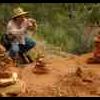



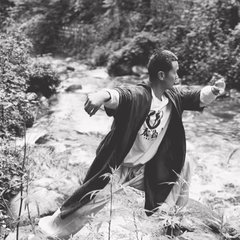

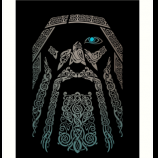


.thumb.jpg.dec3ed0d837a7d44c365eb5d82a9756c.jpg)
